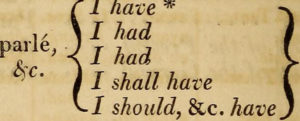Copywriting is the art of delivering readable content that will help your audience in some way. Yes, great copy helps businesses market their products, but it can be used for all kinds of purposes, besides making money. And, thanks to the internet, it’s quickly becoming one of those essential life skills that everyone needs.
But there’s a problem: the way we learn to write in school isn’t the same as the writing demanded by the market. Nobody wants to read dry prose – it’s just not engaging. They want copy that excites.
Writing copy for the internet also differs in other ways that may seem a little more esoteric. Technical considerations play a role too. Here’s what professional copywriters wish you knew about their trade.
Meditate on the Deeper Purpose of Your Writing
All good copywriters have an ulterior motive. Rarely do they put great content out there as a public service. They either want to sell something, promote something, or gather an audience.
Copywriters, therefore, need to have a purpose in mind while they’re writing. Sometimes the content will reveal its purpose explicitly; but more often than not, the intention is implicit. With that said, meditating on the broader purpose of the writing determines the words you use, the tone of the piece, and the way you approach the article, which can all help it to achieve its goal.
Find People Who Want Your Content
It’s hard today to find a group of people on the internet who aren’t served by somebody. But they are out there, and they’re looking for writing that deals directly with the issues in which they’re most interested.
Gary Halbert, a famous copywriter, calls these people his “starving crowd” – those who are hungry for his content. Businesses, in particular, can benefit from these unseen groups of people when they start offering things like tutorials and how-to content. All of a sudden, they begin interacting with people they never imagined existed or would be interested in their services.
Great copywriters are also proactive, not reactive. Rather than wait for feedback on their articles, they go to forums, social media and comments sections on other posts to see what people really want. Often it’s members of your audience who will give you the best ideas for what to say next.
Eliminate Poor Grammar
 We all know that copywriters – especially good ones – have a confident, engaging style. What’s more, they’re not afraid to take linguistic risks, especially if they think that they will make their content more interesting.
We all know that copywriters – especially good ones – have a confident, engaging style. What’s more, they’re not afraid to take linguistic risks, especially if they think that they will make their content more interesting.
But copywriters must always pay homage to grammar, no matter how colorful their expression. Grammar checkers can be a useful tool for those who may not be native speakers or who struggle to remember the difference between “their” and “there.”
Do Research and Create Something Original
Right now, there’s a lot of derivative work out there on the internet. Not only does it offer nothing new to readers, but popular search engines also penalise it. In short, it’s just not effective.
Top copywriters, therefore, do their own research and always try to bring something new to the table. They go to original research papers, reports, and company documents to find data from the source, rather than relying on a news website or another blog.
Creating original content is more time-consuming, but it can provide new insights that nobody else has. For those who like to concentrate on a particular topic – like fashion or electronics – doing your own research is critical for keeping your audience engaged.
Generate Themes and Let Them Evolve
The best bloggers and writers don’t randomly churn out content, hoping that their audience will like it. Instead, they constellate all their work around key, central ideas, which relate to what they do.
There are thousands of mommy bloggers out there. But very few have an underlying philosophy of why they do what they do. Yes, they’ll say that they do it because they love family, but that, in itself, isn’t helpful to readers. What readers want is an overarching set of values – like peaceful parenting – which they can see weaved into all the content. Top copywriters incorporate values into what they say to make it relevant.
Copywriters Don’t Showcase Their Intellect
Copywriters like to insert their personalities into their work as a signal to the reader that they’re super smart or talented. But most people reading your posts couldn’t care less who wrote it or whether you’re a genius. All they want are the answers to their questions.
Part of the craft of writing is expressing complicated things simply and elegantly. Although your feet might be peddling away like mad behind the scenes, it shouldn’t appear to the reader that you’re trying. It should just flow and feel natural. New writers like to introduce big words and complicated sentence structures, but these do nothing but confuse – precisely the opposite of your goal.
Focus On Headlines More Than Body Text
 Most writers lived in a time before the internet when what you wrote was what really mattered. Headlines were barely a consideration unless you worked for a news organisation. But in the era of search and SEO, writers have had to adapt. Now titles are just as important as the content itself, if not more so.
Most writers lived in a time before the internet when what you wrote was what really mattered. Headlines were barely a consideration unless you worked for a news organisation. But in the era of search and SEO, writers have had to adapt. Now titles are just as important as the content itself, if not more so.
Also, headlines make it easier for teams who use LumenAd for advertising.
Titles need to be direct, say top copywriters, and to the point. They shouldn’t drag on, and they should clearly indicate what the reader can expect to find in the article itself. Sometimes, writers try to be smart with headings, but often lose readers when headings don’t capture the essence of the article.
Use Controversy
Controversy sells. It’s interesting, and it’s something about which most of your readers will have an opinion, even if they wouldn’t admit it to anybody else. It’s also downright dangerous and requires a lot of skill to write without offending. But if you can pull it off, your content will find a much larger audience than otherwise. Controversy fuels discussion and shares, amplifying the reach of your work.
What About You?
What copywriting advice would you give to content creators? Share it in the comment box below.
Image credits: George Hodan on PublicDomainPictures | Internet Archive Book Images on Flicker | OpenClipArt on Pixabay
